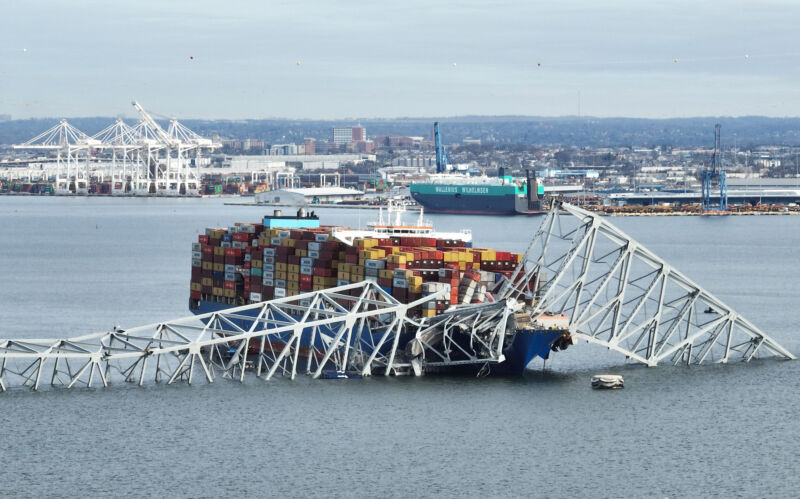Why the Baltimore bridge collapsed so quickly
Ars Technica » Scientific Method 2024-03-27

Enlarge / The steel frame of the Francis Scott Key Bridge sits on top of a container ship after the bridge collapsed in Baltimore on March 26. (credit: Jim Watson/AFP via Getty Images))
Just shy of half past 1 in the morning, the MV Dali, a giant container ship, was sailing gently out of the port of Baltimore when something went terribly wrong. Suddenly, lights all over the 300-meter-long vessel went out. They flicked on again a moment later, but the ship then began to veer to the right, toward one of the massive pylon-like supports on the Francis Scott Key truss bridge—a huge mass of steel and concrete that spans the Patapsco River.
The Dali’s lights went out a second time. Then the impact came. The ship plowed into the support, with large sections of the bridge’s main truss section instantly snapping apart and falling into the river. It took just 20 seconds or so for the structure to come down.